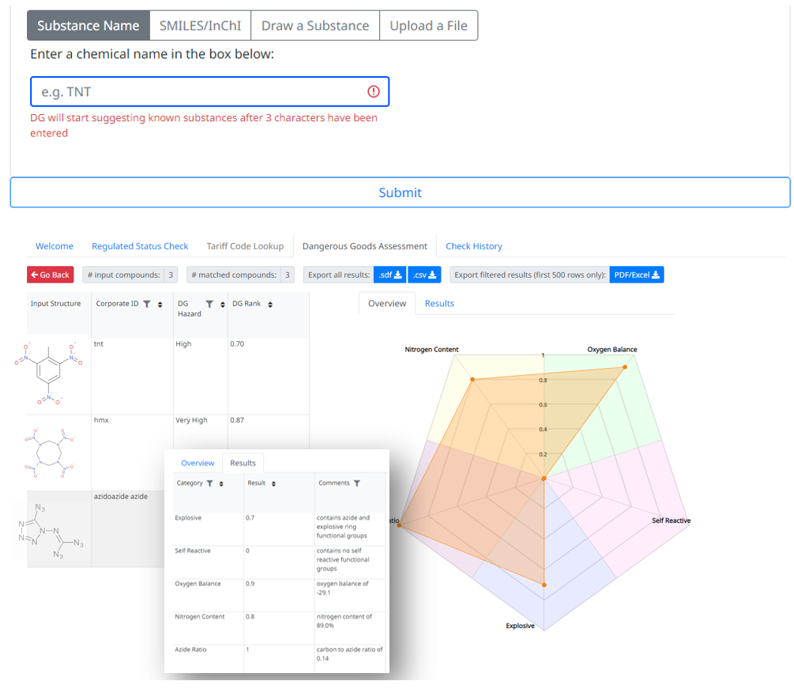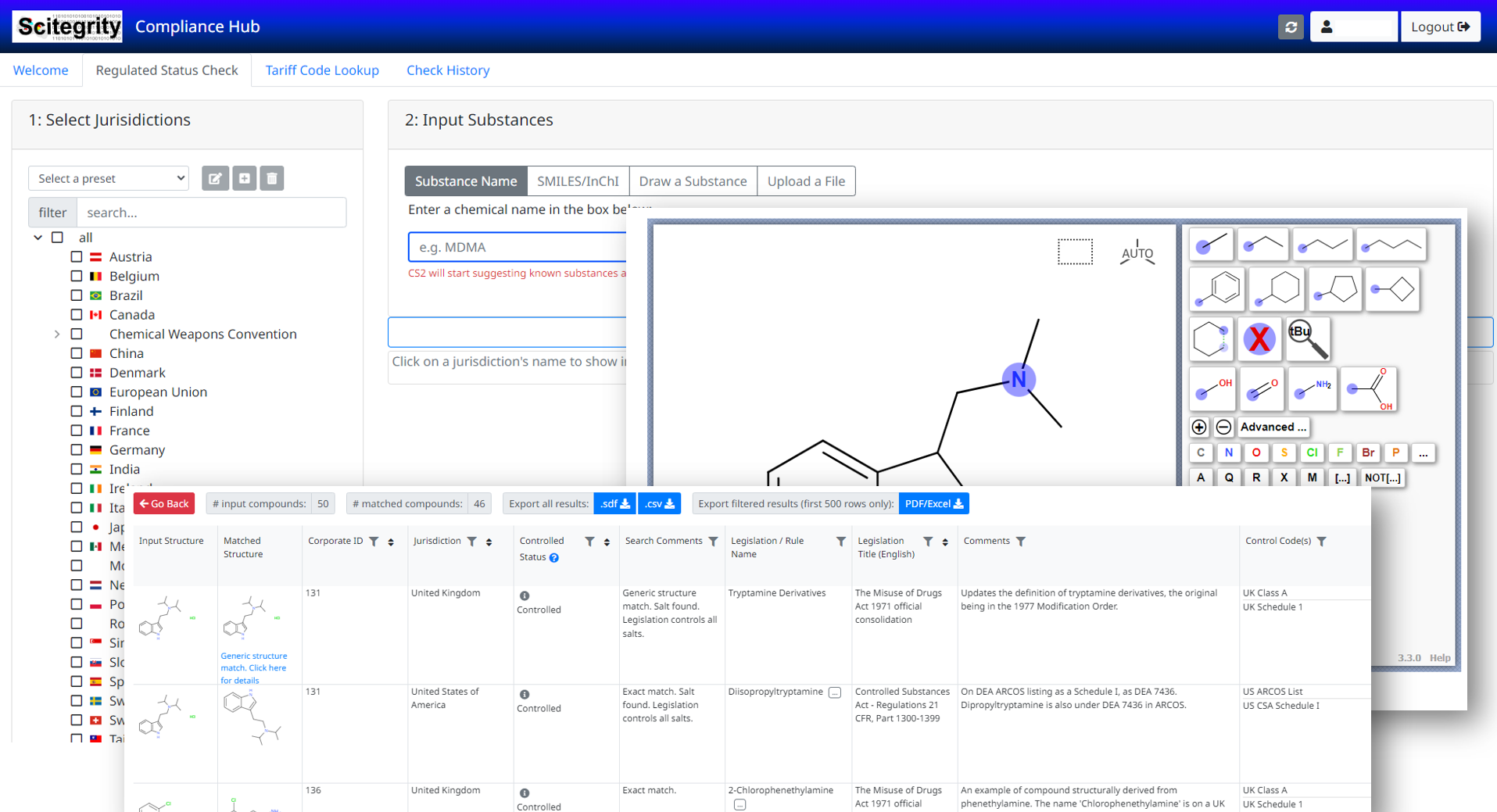In the run-up to ChemUK 2023, AZoM spoke with Joe Bradley from Scitegrity about the company's automated approach to identifying regulated chemicals for industry.
Please could you introduce yourself and your professional background?
I’m a biochemist by training and spent 15 years working in Drug Discovery and informatics at Pfizer and AstraZeneca before starting Scitegrity in 2011, which has since grown to be used by 5 of the world’s top 10 Pharma companies. My particular interest is in chem-informatics and chemical regulations and combining these to make compliance far simpler and more robust.
Scitegrity offers a wide range of solutions to the chemical industry in the interest of compliance and regulation. Could you describe in further detail some of the areas that you cover?
We develop solutions that allow chemical regulations to be searched via a chemical structure. For the end user, this means they can enter any chemical (you don’t even need a name/CAS RN, etc.) and know if it's regulated, generate an HS/commodity code, or asses aspects of dangerous goods regulations related to it. We cover regulations such as Controlled Drugs, Chemical Weapon Convention, Strategic export control, PIC/Rotterdam, dual-use, Ozone-depleting, and more; however, our technology can be turned to many other chemical regulations. Our Compliance Hub platform currently consists of Controlled Substances Squared (is it regulated), ExpediChem (HS/Commodity codes calculations), and DG Assessor (does it pose safety risks).
Why is chemical compliance such an important issue in the wider industry?
The obvious answer is that it’s a legal requirement. Getting it wrong can result in fines, reputational damage, and even jail in cases involving dual use / strategic export of controlled chemicals or controlled drugs. Even if not that extreme, the disruption and burden of an investigation or enhanced regulatory oversight can easily absorb large amounts resources.
But more importantly is the health, safety, and environmental issues compliance tries to prevent. There is an ever-increasing understanding and knowledge of the safety risks many chemicals pose and the diversion of chemicals to illicit purposes. This knowledge is a good thing, but it poses challenges to the industry as the legislation complexity increases, as does the scale of chemicals regulated in some way.
The vast majority of people and companies want to do the right and safe thing. They don’t set out to break the law, however knowing what is regulated and how is a really complex task and in my opinion the most important step in chemical compliance. If you don’t know, how can you act?
How does Scitegrity tackle differing regulations across international jurisdictions?
Different jurisdictions take different approaches to defining and controlling chemicals, but in the end, it comes down to describing classes and types of chemicals they deem regulated in chemical notation or language. This can easily cover billions of potential chemicals, many never synthesized before, with each chemical having hundreds of possible names and identifiers. Named chemicals listed in these regulations are often just a few common examples of the types of chemicals. Historically people have tried to build lists of these, but it never works well – the number of possible chemicals and names is just too vast.

But chemistry is its own language. Our approach is to encode the meaning of the chemical language the regulations boil down to rather than building lists of names. As the computer now understands what the regulations mean to cover chemically, any chemical can be entered, converted to a chemical structure, and then compared to the chemical definition in the legislation. The end result is that any chemical can be assessed automatically, with full justification of any results. It’s also far more reliable, accurate, and up-to-date, with no list of CAS RNs or chemical names in sight!
Scitegrity will be contributing to the show program at ChemUK this May by running a session on making chemical regulations searchable. What are some of the key points that visitors will hear about in this talk?
It’s possible to make a computer understand the meaning of the chemical words and descriptions used in regulations. When it does, you are able to accurately assess whether a chemical is regulated and how/why. The key to this approach is scale; it can then check millions of chemicals automatically each night, telling you which ones are regulated and how whilst adjusting to new regulations or amendments as they appear. This solves the first and often hardest part of chemical compliance – actually knowing what is regulated.
How significantly has automation changed the identification of regulated chemicals?
Enormously. Ten years ago, in the medicinal chemistry domain, people wouldn’t have believed you could assess 1 million novel and proprietary chemicals within a few hours against the regulations of over 30 countries, let alone in a way that is fully automated and to a level of accuracy far beyond what even trained experts can achieve by spending hours on a single chemical.

In 2013 when we started working with several major Pharma companies to try and build the technology to do this, initially for controlled drug laws, it was far from clear that it was achievable. Even now, people often don’t believe it’s possible until they try the system for themselves. What this means, in reality, is that compliance officers can quickly and automatically identify all their regulated chemicals at the enterprise level, allowing them to focus on the really important task of ensuring they are safely and legally handled.
Why do you think it is important for Scitegrity to engage with in-person trade shows like ChemUK?
We came from one particular segment of the chemicals industry, Pharma and medicinal chemistry. However, our technology and capabilities are largely agnostic and can be applied to a wider range of chemical regulations – ChemUK allows us to speak to a wide range of people across the chemicals industry and understand what their challenges and concerns are and how we can help.
Are there any interesting developments on the horizon for Scitegrity?
Plenty, we just have to choose the ones that are of most interest to our current and future clients! Two areas stand out to me, though.
The first is REACH. Much of its chemical definitions and language are amenable to our technology. Would being able to search any chemical structure to see if it is covered by REACH be useful to companies?
The second in Dangerous Goods and GHS/SDS. The DG Assessor can already predict if a chemical is likely to be explosive, energetic, or self-reactive and fall within DG regulations. Would it be useful if we expanded that to cover other areas like acute toxicity, corrosive, environmentally damaging, etc?
On both of these, we are very keen to hear from companies visiting ChemUK 2023 who would like to see this capability.
More from AZoM: IBioIC on Manufacturing Chemicals with Bio-Based Processes
About Joe Bradley
 Joe Bradley is a biochemist who worked in the Drug Discovery industry for over a decade for the like of Pfizer and AstraZeneca before founding Scitegrity Limited in 2011. Scitegrity is a cheminformatics company which specializes in developing tools allowing chemical regulations to be computationally encoded and searched. Our compliance tools are used by 5 of the world’s top 10 Pharmaceutical companies and dozens of chemical companies to constantly and automatically check all chemicals they possess for compliance issues. In his spare time, Joe is learning how to skateboard with his 5-year-old daughter – kids bounce better than dads!
Joe Bradley is a biochemist who worked in the Drug Discovery industry for over a decade for the like of Pfizer and AstraZeneca before founding Scitegrity Limited in 2011. Scitegrity is a cheminformatics company which specializes in developing tools allowing chemical regulations to be computationally encoded and searched. Our compliance tools are used by 5 of the world’s top 10 Pharmaceutical companies and dozens of chemical companies to constantly and automatically check all chemicals they possess for compliance issues. In his spare time, Joe is learning how to skateboard with his 5-year-old daughter – kids bounce better than dads!
Disclaimer: The views expressed here are those of the interviewee and do not necessarily represent the views of AZoM.com Limited (T/A) AZoNetwork, the owner and operator of this website. This disclaimer forms part of the Terms and Conditions of use of this website.